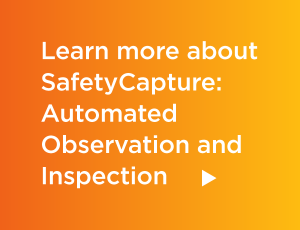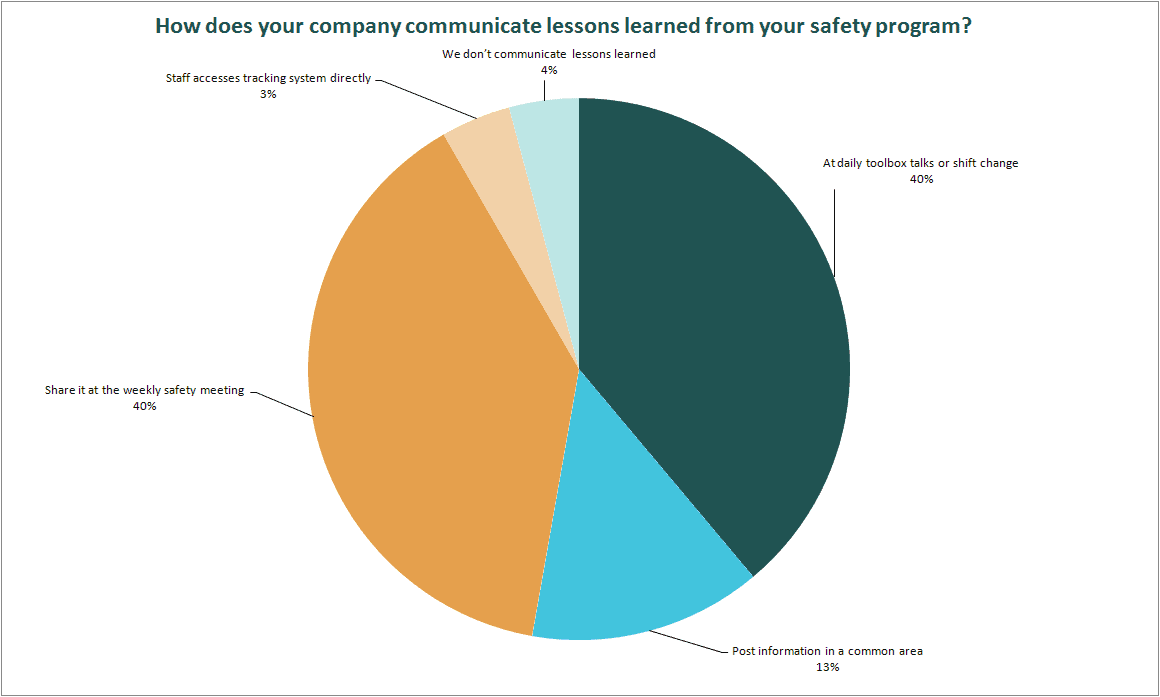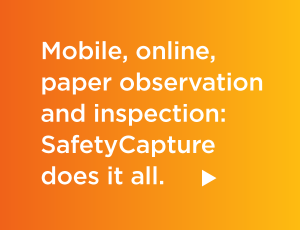 One thing safety professionals know: it’s not enough to just report and track incidents, near misses, and daily behavior—you have to learn and communicate the lessons exposed by the data. There are many ways to capture the most current data, ranging from simple pen-and-paper to sophisticated computer and mobile device tools.
One thing safety professionals know: it’s not enough to just report and track incidents, near misses, and daily behavior—you have to learn and communicate the lessons exposed by the data. There are many ways to capture the most current data, ranging from simple pen-and-paper to sophisticated computer and mobile device tools.
A prudent safety professional takes advantage of all of these methods to create a complete safety picture and keep his or her data up-to-date. As a safety professional, of course you have gathered all of your forms, entered the data, and have a clear view of your program.
Regardless of how you capture your data, the next step is improving safety by extracting actionable data from that picture. Communicating lessons learned leads to improved safety – no one wants to get hurt at work. And there’s an additional benefit. According to a study performed by the Aberdeen Group for Rockwell Automation[1], “companies reporting the lowest injury rates also had the best productivity.” Avoiding the high cost of workplace safety incidents and improving productivity is certainly a priority in these tough economic times.
Further, direct and open communication is part of an effective safety culture. Mark Middlesworth, in his blog post “25 Signs You Have an Awesome Safety Culture” identifies several significant communication items:
- There is regular, facility-wide communication on health and safety topics.
- There is meaningful involvement in health and safety from everyone in the organization.
- Employees are actively engaged in health and safety initiatives, producing tangible results for your company.
- Safety is the first item on the agenda of every meeting.
- A high standard exists for accurate and detailed reporting of injuries and illnesses – nothing is swept under the rug! [2]
Communication has to be regular, consistent, and above all safe to drive effective safety change.
And no matter how much we want to focus only on the positives–safer workers, improved productivity–we all know there’s a cost involved, too. Unsafe work environments lead to higher worker’s compensation insurance costs. Further, OSHA audits can impose heavy fines, particularly if the organization knew about the problem and did nothing—and sometimes even if they didn’t know about it but should have.[3]
But how are safety professionals communicating safety lessons? Scantron decided to find out.
About the Poll
The data presented here was gathered from a poll administered to the following LinkedIn groups:
- American Society of Safety Engineers (now called American Society of Safety Professionals)
- Behavior-Based Safety (BBS)
- EHS Professionals
- WISE—Women in Safety Engineering
A total of 70 participants responded over the course of 3 weeks in February/March 2012. Participation in the poll was entirely voluntary.
This data represents an informal look at practices regarding communicating safety lessons learned. Question and answer choice length were determined by LinkedIn’s polling system. In that system, polls are restricted to 5 answer choices and participants may only choose one answer.
All poll participant quotes are used by permission of the quoted parties.
How Are Safety Professionals Communicating Lessons Learned?
We asked members of several LinkedIn safety professional groups to take a short poll:
How does your company communicate lessons learned from your safety program?
- At daily toolbox talks or shift change
- Post information in a common area
- Share it at the weekly safety meeting
- Staff accesses tracking system directly
- We don’t communicate lessons learned
77 participants across four groups responded:

NOTE: Due to the restrictions of the polling system, participants were only allowed to choose one of the available responses. In comments, some participants indicated that they use several of these methods. Those adjusted totals are reflected in the chart.
Results were evenly split (40% each) between “At daily toolbox talks or shift change” and “Share it at the weekly meeting.” Clearly, frequent and direct communication is considered to be a best practice. In fact, poll participants felt strongly that regularly communicating lessons learned helped workers feel more connected to safety:
“By rewarding the shared communication, we remove the usual stigma associated with experiencing a near-miss/close-call and we can all learn from the experience. We have found this practice to be very beneficial in eliminating unsafe conditions around the plant. The look on their faces, the tone of their voice, their body language as they relate their experience, is by far one of the most effective tools in communicating the human impact of plant safety.” Joel Stump, Training Specialist
Another group (15%) responded that they post observation, incident, and near-miss statistics in a common area, such as a lunch/break room or highly-visible floor area. And they recommended that this information should be kept up-to-date, with regular changes to both the data and the visual presentation. As one participant states:
“If your … content/postings, safety or otherwise, do not change, they become wallpaper, and as a result, the attention you’re trying to achieve is minimized.” David Gottschalk, Regional Sales Manager
 A minority of participants noted that they do not share this information, and several participants commented that, even though they share the lessons learned, they felt they and their organizations could improve the sharing process and increase attention to safety issues.
A minority of participants noted that they do not share this information, and several participants commented that, even though they share the lessons learned, they felt they and their organizations could improve the sharing process and increase attention to safety issues.
Very few participants indicated that their company commonly provided direct access to tracking or reporting systems/dashboards—only three percent chose this response. It is unknown whether this is due to licensing or technology issues.
What Can We Learn from This?
The most common thread among participants’ comments was the need to involve workers directly, immediately, and viscerally in lessons learned from their organization’s safety system. Without that ownership, participants felt that workers perceived safety programs as irrelevant—or worse, actively bothersome:
“I find with promoting a safety culture, zero accident target, goals, etc., the workers need to make the safety program theirs. They need to be part of the safety program and what is in it. If not, it will just be another thing to do at work.” Bob Dearth, Safety, Health & Environmental Manager
Poll participants identified (either by their answers or through comments) some recommended best practices:
- Involve the workers directly by soliciting their participation in positive and non-threatening ways.
- Share lessons learned regularly, either at toolbox talks or in weekly safety meetings.
- Change procedures based on what you learn—and involve the workers directly in identifying and brainstorming the changes.
- Communicate using multiple methods to keep your important message from becoming “wallpaper.” Some ideas include:
- Creating posters showing hazards and prevention
- Sending targeted reports directly to affected employees via email or in their pay packets
- Emailing specific alerts
- Conducting demos of safe/unsafe behaviors at meetings
- Scheduling phone calls/teleconferences for distributed teams
- Provide consolidated information to executives, along with noting the positive financial/productivity impact and performance against goals/targets
Today’s technology provides a variety of ways to capture safety data for a portrait of your safety culture. Mobile applications and direct keyboard entry into tracking software provide technology solutions that have made it easier, in some ways, to have an up-to-date picture. But in other ways, this technology can be a barrier: providing access to this technology can be costly. Equipping field personnel with the latest mobile devices may not actually solve the problem—devices get lost, break, refuse to connect, are sensitive to weather conditions, often require expensive training. Putting pen to paper is often still the fastest, easiest, most cost-effective way to capture information.
With paper forms, you get the ease of a “technology” everyone already understands and can use. However, the information needs to get from the paper forms into a system that concentrates the data so you can easily see a complete picture and make changes to your safety practices in a timely fashion. Tracking and correcting hazards and proactively observing ordinary day-to-day behavior leads to reduced insurance premiums and worker’s compensation costs, as well as improving both productivity and the health and safety of your workers.

SafetyCapture™ onDemand by Scantron is a web-based solution that helps improve your safety observation process and generate positive change. Rather than keying data from checklists, observations and audits, you can efficiently scan those forms and collect the data electronically, saving time and money. For safety leaders and safety programs everywhere, SafetyCapture onDemand delivers a smarter way to access and gain insight to your safety data.
However, simply having the data in a system is not enough. You need to see the pattern created by identified hazards and observed daily behavior to predict and prevent future hazards. Effective reporting is a key component of prediction and prevention. Scantron partners with several safety reporting providers—SafetyCapture onDemand can seamlessly transfer scanned form data directly into the safety tracking databases provided by our strategic alliance partners. SafetyCapture onDemand itself will begin providing basic statistical reports in 2012.
Scantron understands that creating a complete safety picture and communicating that picture effectively to workers, management, and executives benefits everyone by providing greater safety, contained costs, and improved bottom lines. And isn’t that ultimately what an effective safety culture is all about?
[1] Eitzman, Mark. “The Business Case for Safety.” Control Engineering Europe. 28 Feb. 2012. Web. 22 Mar. 2012.
[2] Middleworth, Mark. “25 Signs You Have An Awesome Safety Culture.” Web log post. 25 Signs You Have An Awesome Safety Culture. Ergonomics Plus, 28 Feb. 2012. Web. 22 Mar. 2012.
[3] Kilbourne, Chris. “Types of OSHA Citations and How Much They Cost.” Safety Daily Advisor. BLR Business & Legal Reports, 5 Jan. 2012. Web. 22 Mar. 2012.


Social
View our latest posts or connect with us below on Social Media.